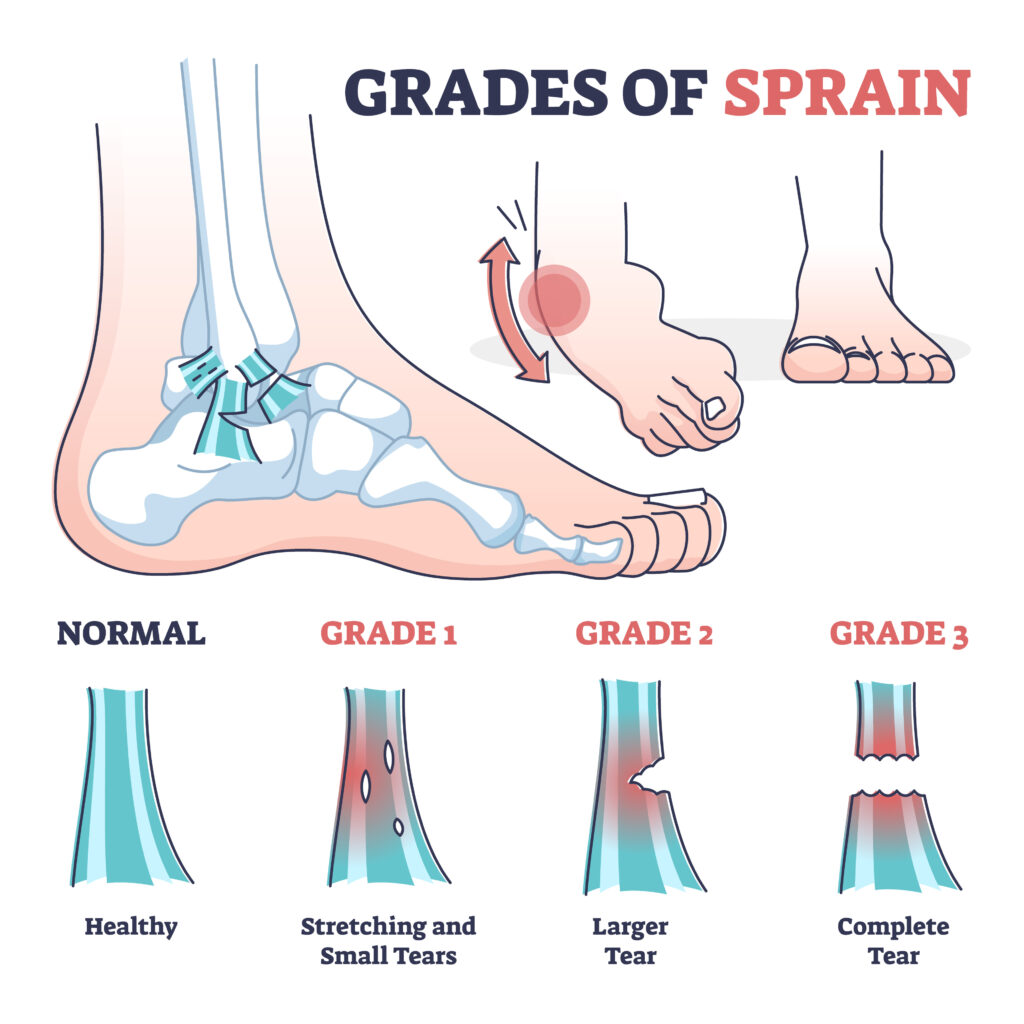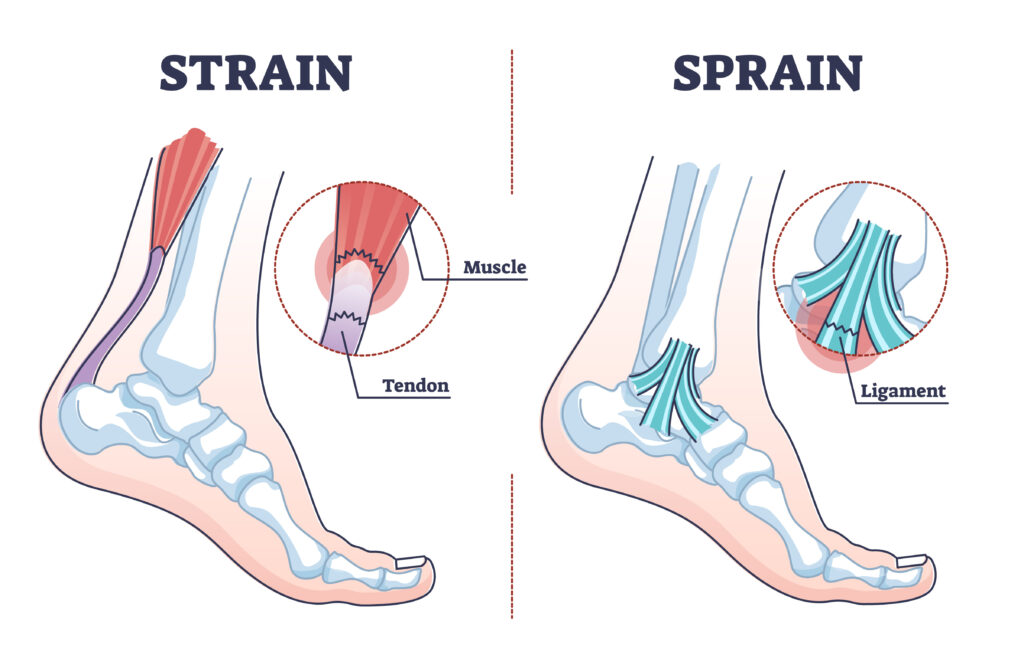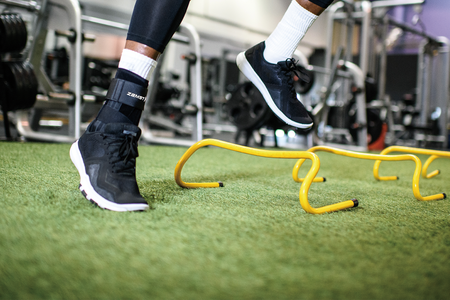The dreaded words for an athlete “ankle sprain!” If you have played sports especially ones that rely on jumping and landing, then you have probably encountered an ankle sprain in your life. Even though the human body is an incredible healer sometimes even the strongest structures need a little extra support, especially when it comes to vulnerable areas like the ankles. Ankle injuries are common and can range from mild sprains to more severe fractures. To aid in the healing process and prevent future injuries, selecting the right ankle brace is crucial. Throughout this blog you will learn what an ankle injury is, considerations for choosing the right ankle brace, and how to reduce ankle sprains with an ankle brace.
Understanding Ankle Injuries
Before delving into the specifics of choosing the best ankle brace, it’s essential to understand the types of ankle injuries and their severity levels. Ankle injuries often fall into three main categories:
Sprains
This is the most common type of ankle injury, occurring when the ligaments connecting the bones are stretched or torn. Sprains are categorized into three grades: mild (Grade I)-microtears, moderate (Grade II)-partial tear, and severe (Grade III)-full tear.
Strains
Strains involve damage to the muscles or tendons around the ankle joint. These injuries can range in severity and how it affects one’s ability to move and bear weight. Strains are also categorized into three grades: mild (Grade I), moderate (Grade II)-partial tear, and severe (Grade III)-full tear.
Fractures
Fractures occur when there is a break in the bone. They can vary in severity, from hairline fractures to complete breaks that require surgical intervention.
Considerations for choosing the right ankle brace
When it comes to ankle support and choosing the right ankle brace it requires careful consideration of a multitude of factors. Every individual has specific needs and choosing the correct type of ankle brace support can vary from each person. Here are the five key factors to keep in mind:
- Type of Injury and Support Needed: The type and severity of your ankle injury will dictate the level of support required. Mild sprains may only necessitate a basic brace for stabilization, while more severe injuries might require rigid support to restrict movement.
- Brace Style: Ankle braces come in different styles, including sleeves, lace-ups, straps, and stirrup braces. Sleeve-style braces offer compression and basic support, while lace-ups and straps provide adjustable tension and enhanced stability. Stirrup braces, with their bilateral support, are excellent for moderate to severe injuries.
- Fit and Comfort: An uncomfortable brace can discourage consistent use. Look for a brace that fits snugly but not too tight, allowing for comfortable movement and easy adjustment.
- Material and Breathability: Choose a brace made from breathable materials to prevent excessive sweating and discomfort. Neoprene, fabric blends, and mesh panels are often used in quality ankle braces.
- Activity Level: Consider your daily activities and whether you need a brace for sports, work, or daily tasks. Some braces are designed specifically for sports and offer better flexibility, while others provide more rigid support for everyday use.
How to avoid ankle sprains with an ankle brace
If you play any high-level sports that require cutting, jumping, landing and quick movements then ankle sprains can be a common type of injury. An ankle sprain brace can be one way to reduce ankle sprains and/or lessen the severity of the sprain. The Zamst A2-DX provides significant support for the ankle without limiting mobility. There are 5 reasons why the Zamst A2-DX might be the most superior ankle brace on the market.

- Protective guards: Stabilization prevents excessive inward and outward movements of the high ankle
- Dual X-Strap Stabilizer: Provides three-way support (Anterior, Lateral, Medial) for the lower ankle
- Left and Right Specific Design: Designed specifically for each ankle to provide a better fit
- Rear Application: Enables easy application and adjustment
- Comfort: Low-profile material with excellent breathability and anti-microbial properties
Selecting the right ankle brace is a crucial step in preventing further injury and maintaining an active lifestyle. In a 2019 study, looking at ankle braces they found that three different types of braces reduced ankle and foot inversion compared to the unbraced group1. Reducing the chance of an ankle sprain can be a true game changer in sports like basketball.
By considering factors such as the type of injury, brace style, fit, and activity level, you can make an informed decision that best suits your needs. Remember that seeking professional medical advice is paramount, as healthcare professionals can provide tailored recommendations based on your individual circumstances. With the right ankle brace and proper care, you’ll be well on your way to achieving optimal ankle support and overall well-being.
- Dewar RA, Arnold GP, Wang W, Drew TS, Abboud RJ. Comparison of 3 ankle braces in reducing ankle inversion in a basketball rebounding task. The Foot. 2019 June; Vol 39: 129-135









